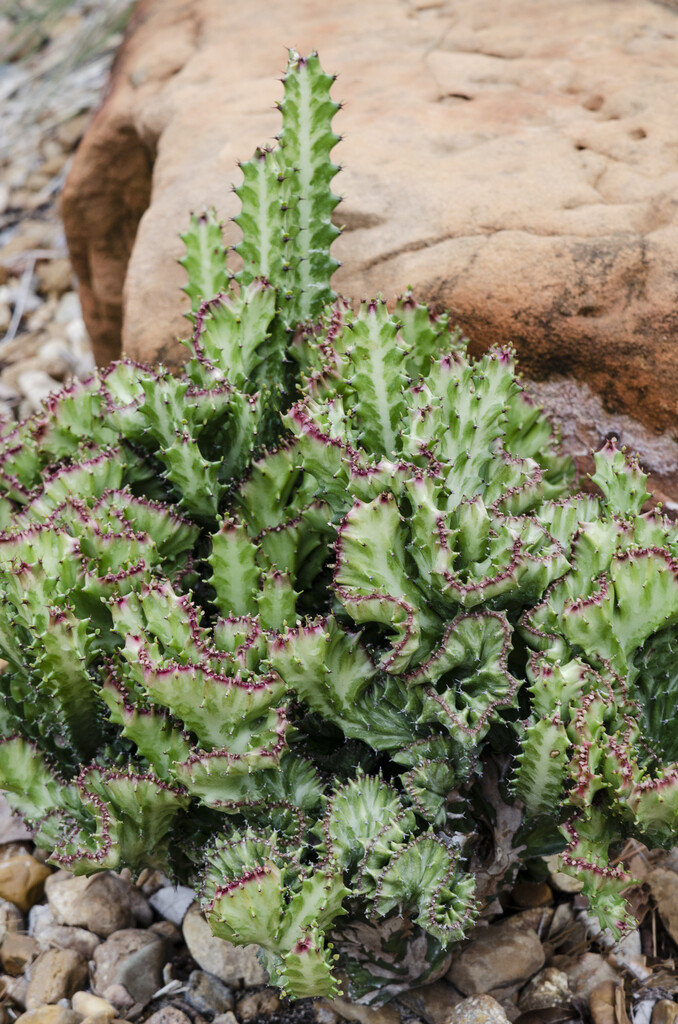Euphorbia lactea 'Cristata'
mottled spurge 'Cristata'
A compact, evergreen, frost-tender succulent shrub on which the stem's growing point has mutated into a line or crest, so that the plant eventually forms a dome to 90cm (3ft) high and 60cm (2ft) wide of ridged, undulating, reddish-green growth that resembles the appearance of brain coral. The small flowers are rarely produced, but can appear in spring and are a pinkish, green-yellow. It is usually grafted onto the stem of another euphorbia species. Its slow growth, temperature requirements and ornamental value make it a useful subject for a sunny window indoors
Size
Ultimate height
0.5–1 metresTime to ultimate height
5–10 yearsUltimate spread
0.5–1 metresGrowing conditions
Moisture
Well–drainedpH
Acid, Alkaline, NeutralColour & scent
| Stem | Flower | Foliage | Fruit | |
| Spring | Pink Green Yellow | Green Red | ||
|---|---|---|---|---|
| Summer | Green Red | |||
| Autumn | Green Red | |||
| Winter | Green Red |
Position
- Full sun
- Partial shade
Aspect
South–facing or West–facing or East–facing
Exposure
ShelteredDrought resistance
Yes Hardiness
H2Botanical details
- Family
- Euphorbiaceae
- Native to GB / Ireland
- No
- Foliage
- Evergreen
- Habit
- Bushy
- Potentially harmful
- Humans/Pets: IRRITANT to skin/eye, harmful if eaten. Wear gloves and other protective equipment when handling. For further information and contact numbers regarding pets, see the HTA guide to potentially harmful plants
- Genus
Euphorbia can be annuals, perennials, shrubs or succulents, with milky sap and small flowers held within cupped, often colourful bracts
- Name status
Accepted
How to grow
Cultivation
Grows best in well-drained soil, in full sun to partial shade. See houseplant cacti and succulent cultivation for further details
Propagation
Propagate by grafting
Suggested planting locations and garden types
- Houseplants
- Patio and container plants
- Conservatory and greenhouse
Pruning
No pruning required
Pests
May be susceptible to mealybugs
Diseases
Generally disease-free
Get involved
The Royal Horticultural Society is the UK’s leading gardening charity. We aim to enrich everyone’s life through plants, and make the UK a greener and more beautiful place.
